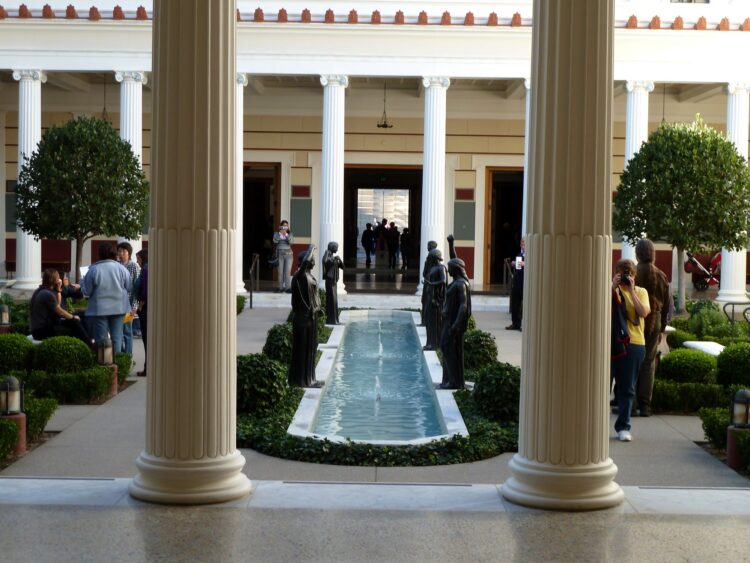Third in a series of articles
In my first piece in this series, I discussed the Lysippos of Fano bronze sculpture which is currently exhibited at the Getty Villa in California. Lysippos, a 4th century BCE sculptor, was considered one of the most important artists of Ancient Greece. In 1964, an Italian flagged fishing vessel from Fano, Italy, discovered the statue while dragging its nets in the Adriatic Sea. Italian law dictated that the artifact had to be declared to customs upon its arrival on the Italian shore where they would document its existence and the Italian Republic would automatically become the proprietor of the piece of cultural patrimony.
The owner and captain chose instead to intentionally hide the piece and they eventually sold it to an antiquities dealer and secretly removed it from the country without ever being registered and without a legal license of export ever being issued. The statue was cleaned and restored and eventually ended up in London, where the oil magnate J.P Getty took an interest in buying it. The Getty Museum bought the statue in 1977.
What amounts to a five-decades-long judicial battle to repatriate the statue to Italy has taken place and there have been numerous indictments and court proceedings. The final decision was made in 2018 when the Italian Court of Cassation, Italy’s Supreme Court, ruled that the bronze was Italian cultural property, Italian law had been broken when it was smuggled out of Italy without a license of export, and the Getty must return it to Italy. The Getty immediately issued a press release stating it would not respect the Italian court’s decision and would not return the statue.
In article 2 in this controversy, I subsequently examined what three experts from Fano have to say regarding a diverse array of possible solutions utilizing cultural diplomacy to arrive at an acceptable agreement. The Mayor of Fano, the lawyer Tristano Tonnini, who, along with his father Tullio Tonnini, fought for many years for the statue’s restitution in the Tribunal of Pesaro, and Stefano Alessandrini, who explained the Italian brand of cultural diplomacy that seeks to forge a strong and friendly relationship with the Getty and other American museums, but insists on restitution.

In this 3rd and final installment, I will look at the current status of the case. I speak with two cultural patrimony experts who share their thoughts, both of whom attended all the court proceedings at the Tribunal of Pesaro and at the Italian Court of Cassation.
An important juncture in this case occurred in 2005, when Italy indicted a Getty curator named Marion True for criminal conspiracy, receiving stolen goods, and crimes relating to the trade in cultural goods. As explained above, Italians like to use soft diplomacy to achieve the goal of restitution, therefore, in a very discreet act of cultural diplomacy, True was never despite ample evidence; instead they allowed the statute of limitations on charges against her to expire.
As a result of her arrest and the threat of a cultural embargo however, the Getty and four other U.S. museums agreed to return all items to Italy that were proved to be stolen and promised to be transparent and honest in their purchases going forward.
At that time, the Getty agreed to restitute 40 objects right away (that number has largely grown over the years) but since the Lysippos Victorious Youth Bronze case was working its way through court proceedings, both Italy and the Getty agreed to table the discussion and return to it later, after the courts made their decision.
That was sixteen years ago. In 2018 the Italian Court of Cassation ruled that the Lysippos Bronze must be returned to Italy. But the Getty leadership are back to their old game and ignoring the court order. The Getty wants to argue whether the statue was found in international or Italian territorial waters, a fact that is irrelevant since the statue was discovered by an Italian flagged vessel and brought onto the Italian shore, thus making it the property of the Republic and necessitating declaration to Italian customs.
I asked Lynda Albertson, the CEO of the Association for Research into Crimes Against Art which operates a postgraduate study program in art crime in Amelia, Italy, for clarification and she stated: “The Getty has not always been publicly transparent when announcing their decisions to relinquish pieces. Polished to say as little as possible which might paint the museum in a negative light, their press releases underscore that a restitution is being made, and not the chain of events which took place which forced their hand into making said restitution. Take for example the recent return of the Sculptural Group of a Seated Poet (Orpheus) and two sirens.

In their August 2022 press release for this grouping the museum stated, ‘Thanks to information provided by Matthew Bogdanos and the Antiquities Trafficking Unit of the Manhattan District Attorney’s Office indicating the illegal excavation of Orpheus and the Sirens, we determined that these objects should be returned.’ The press release failed to mention that the sculptures had been seized by the New York authorities nearly four months earlier, which is quite different from a magnanimous gesture, based on their own internal review of problematic works.
What perplexes and frustrates trafficking researchers is why the museum has gone back on the August 2007 accord between Italy’s Culture Ministry and the Getty where the museum agreed to restitute 40 objects (under the threat of an imposition of a cultural embargo) and together agreed to postpone discussions on the Getty Bronze until the legal case brought in the Italian town of Pesaro was resolved. If the museum’s management truly wanted to appear ‘woke’ to the issues of illicit trafficking, why restitute the Orpheus grouping while still foot dragging on the Victorious Youth?”
Stefano Alessandrini, the Expert Consultant for Cultural Diplomacy at the Italian Ministry of Culture, stated: “The Getty must begin a new era and become a more important place in the world where one can admire ancient art from Italy without masterpieces that are dirtied from illicit trafficking. We must forge a strong friendship between Italy and the Getty with loans of artistic objects in exchange for legitimate restitutions. The Getty does not have to see this as a defeat but should view it as doing what is right by setting a fine example of institutional integrity and living up to a code of ethics for the entire world. I would be very happy if the Getty became a fine example for all the museums of the world.”
So, I publicly ask the Getty: Why are you disrespecting the Italian Court of Cassation and the Italian people and refusing to restitute the Lysippos Victorious Youth? Your actual quote in your press release about the Orpheus statue said, “there was irrefutable evidence that this was stolen from Italy”. Isn’t there irrefutable evidence that the Lysippos Bronze was on Italian shore and was illicitly removed and sold?












